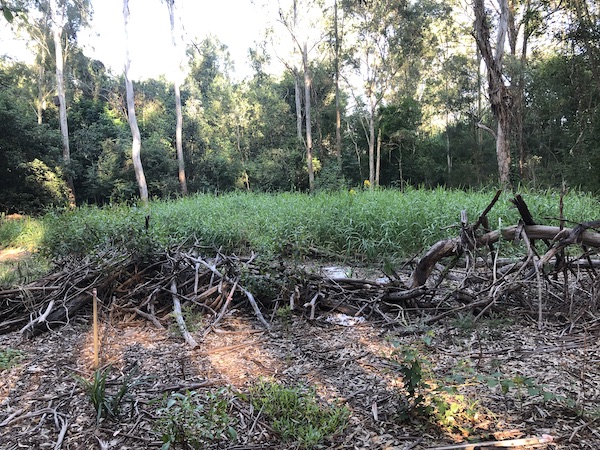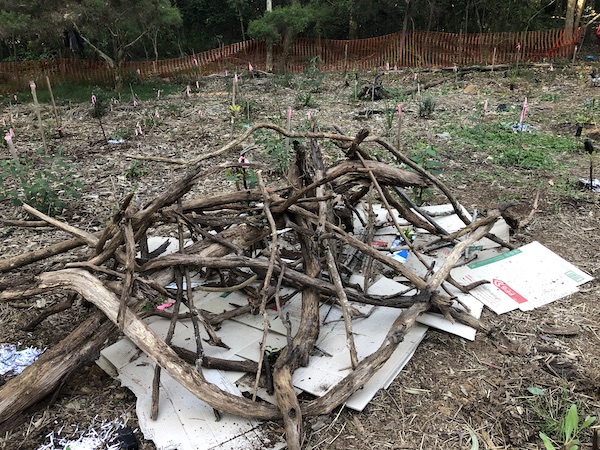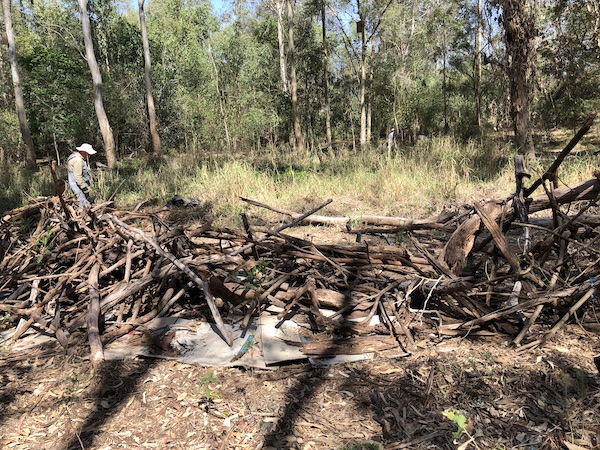
Generally, bush regeneration of an area at Ekibin Creek begins with the removal of weeds (e.g. lantana) followed by re-propagation with locally native species. Of course, this can take some time and there is often an interval of months or even years where there is no foliage cover. One apparent and concerning effect of this regeneration activity has been the steady decline in fairy wren populations. While they are still breeding close by, they seem to have stopped nesting in areas that has been extensively worked on. This may be because our regeneration practices have altered their preferred nesting habitat, allowing for greater predation, reducing suitable nesting sites or diminishing food sources.

In a study of wrens near Armidale, Nias & Ford (1992) found that breeding success for Fairy Wrens was correlated with habitat quality, so it is likely that habitat change is a significant factor. Further, Crates et al (2012) report that some species of fairy wren are particularly sensitive to human presence. By "opening up" sites for human activity (including bush regeneration, bush walking, etc) we may be inadvertently excluding these birds.

To address the wren population decline we have begun to experiment with altered regeneration practices to enable what we hope are enhanced, protected wren habitats. Chiefly, we have constructed "bramble cages" combined with in situ planting of thorny native shrubs. The cages are loose constructions of fallen timber placed over weed-suppressing matting.

The purpose is to provide protected habitat and to discourage egress by predators and humans. The initial weed suppression will not be enough given that any cleared areas at the Ekibin Creek site will carry a significant seed load. So constant surveillance and follow-up maintenance will be necessary.
References
Crates, Ross & French, Kristine & Mclean, Christopher. (2012). The abundance and distribution of two species of Fairy-wren in suburban and natural habitats. Emu. 112. 76. 10.1071/MU10057_CO.
Nias, R. & Ford, Hugh. (1992). The Influence of Group Size and Habitat on Reproductive Success in the Superb Fairy-wren Malurus cyaneus. The Emu: official organ of the Australasian Ornithologists' Union. 92. 238-243. 10.1071/MU9920238.